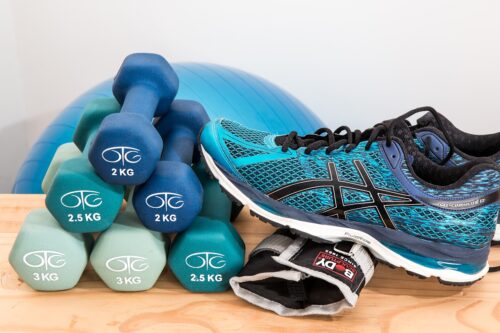Hello, my dear ones! Today, let’s dive into the world of health-related fitness, a journey that is as important as any adventure you’ll embark on in life. Health-related fitness is like the magic potion that keeps our bodies strong and ready for anything life throws our way. So, buckle up as we explore the five components that make up this wonderful elixir.
Table of Contents
ToggleComponent 1: Cardiovascular Endurance
Defining the Heartbeat Hero
Firstly, let’s meet the heartbeat hero – cardiovascular endurance. Imagine your heart as a mighty warrior, constantly pumping blood to every nook and cranny of your body. Cardiovascular endurance is about how efficiently this warrior can keep going without getting tired.
Importance of a Steadfast Heartbeat
Why is this important, you ask? Well, it ensures that your body receives the oxygen it needs, making everyday activities a breeze. It’s the difference between a tired warrior and one ready for the next battle. So, what activities can we do to train our heartbeat hero? Think of activities that get your heart pumping – running, swimming, or even dancing like nobody’s watching.
Tips from Dad’s Experience
Now, from my experience, start slow and gradually increase the intensity. You wouldn’t want to send your heartbeat hero into battle unprepared!
Component 2: Muscular Strength
Building the Castle Wall
Next up, let’s talk about muscular strength. Imagine your muscles as the sturdy walls of a castle. Muscular strength is about how well these walls can resist outside forces.
Importance of Castle-Strong Muscles
Having strong muscles isn’t just about looking tough; it’s about being able to carry heavy loads, whether it’s groceries or your little brother on your shoulders. Remember the time I carried both of you on my back? That was thanks to strong muscles.
Exercises for Little Muscles to Grow Big and Strong
To make your muscles grow big and strong, try exercises like push-ups, squats, or lifting weights. But always remember, just like building a castle takes time, building muscle strength requires patience.
Component 3: Muscular Endurance
The Marathon Warrior
Now, let’s meet the marathon warrior – muscular endurance. Imagine your muscles as warriors in a marathon, able to keep going without giving up.
Why Marathon Warriors Matter
Having good muscular endurance means you won’t tire easily during activities like playing sports or hiking. It’s like having an army of tireless soldiers ready for any challenge.
Exercises to Train Your Marathon Warriors
To train your muscular endurance, try activities that involve repeating the same movement, like cycling, swimming, or doing bodyweight exercises. It’s like practicing for a marathon – little by little, you’ll build up your stamina.
Component 4: Flexibility
The Limber Explorer
Now, let’s talk about flexibility – the limber explorer of our fitness journey. Imagine your body as an adventurer, able to bend and stretch without any hindrance.
Why Being Limber Matters
Flexibility is not just about doing fancy stretches; it’s about preventing injuries and making sure your body moves smoothly. So, when you want to reach for the cookie jar on the top shelf, a flexible body is your secret weapon.
Stretching into the Unknown
To improve flexibility, try stretching exercises like yoga or simple stretches you can do at home. Remember, our bodies are like superheroes – they need to stay agile and ready for action.
Component 5: Body Composition
The Puzzle of Body Composition
Last but not least, let’s unravel the mystery of body composition. Think of your body as a puzzle, and body composition is about figuring out how the pieces fit together.
Why Balancing the Puzzle Matters
Maintaining a healthy body composition is essential for overall well-being. It’s not about fitting into a certain mold but about making sure your body has the right amount of muscle, fat, and other tissues.
Unveiling the Secrets of the Puzzle
To understand your body composition, you can use methods like measuring body fat percentage or paying attention to how your clothes fit. And remember, each body is unique – it’s not about being perfect but about being healthy.
Integrating the Components
The Symphony of Fitness
Now that we’ve met the five components, it’s time to bring them together in harmony. Think of your fitness routine as a symphony, where each instrument (or component) plays a crucial role.
Understanding the Dance of Components
Balancing cardiovascular endurance, muscular strength, muscular endurance, flexibility, and body composition creates a well-rounded fitness routine. It’s like learning to ride a bike – you need balance, strength, and endurance to stay on track.
Setting Realistic Goals
Just like in life, setting realistic fitness goals is essential. Start small, celebrate your victories, and remember, it’s a journey, not a race.
Conclusion
So, my little adventurers, there you have it – the magical world of health-related fitness. Remember, this journey is not about perfection but about taking care of the incredible bodies you’ve been given. So, lace up those sneakers, grab your water bottles, and let’s embark on this adventure together – the adventure of a healthy and happy life!
ALSO-READ: Probate Sale: Overview | Process | Benefits
